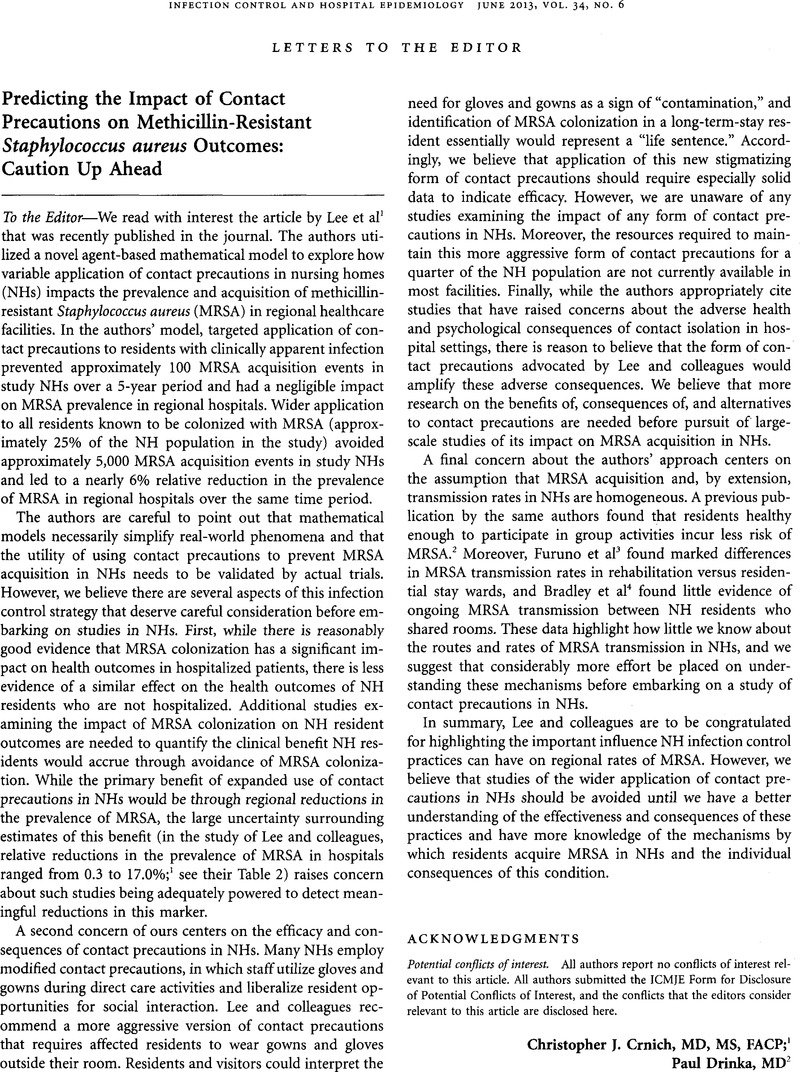Crossref Citations
This article has been cited by the following publications. This list is generated based on data provided by Crossref.
Crnich, Christopher J.
2013.
Impact and Management of MRSA in the Long-Term Care Setting.
Current Translational Geriatrics and Experimental Gerontology Reports,
Vol. 2,
Issue. 3,
p.
125.
Lee, Bruce Y.
Bartsch, Sarah M.
and
Huang, Susan S.
2013.
Reply to Crnich and Drinka.
Infection Control & Hospital Epidemiology,
Vol. 34,
Issue. 6,
p.
647.



